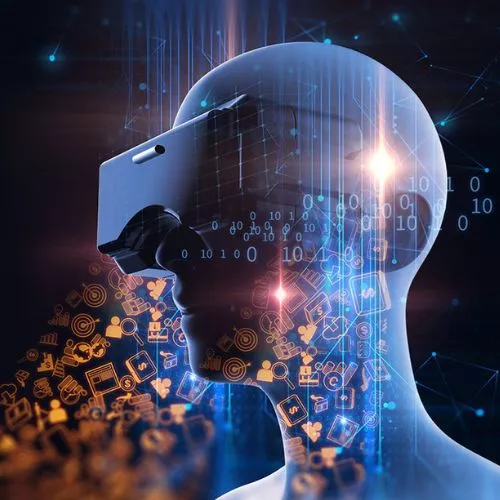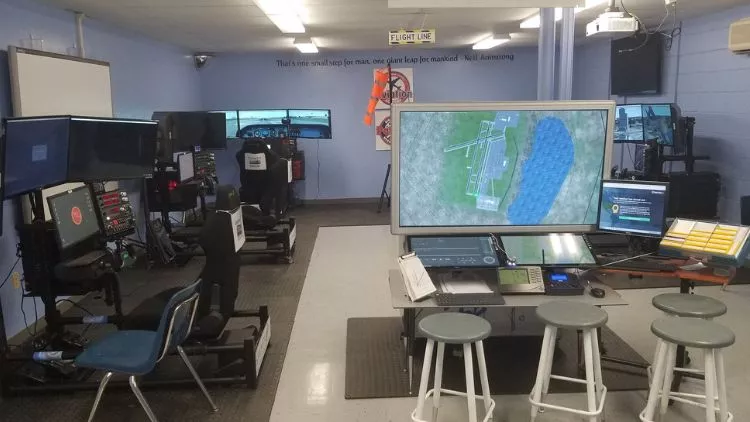The Future of Work - Virtual Reality in the Workplace

With the future of work shifting towards workforce development in Virtual Reality, schools, job centers, colleges, and industry are making plans to integrate this new technology into their training.
Funding always comes to mind first, but thanks to grants and other opportunities, it’s paving the way for Virtual Reality to become more commonly seen.
However, there are many factors to consider when integrating Virtual Reality into training employees.
Jump To Section

Earn As You Learn
Earn 25% commission when your network purchase Uplyrn courses or subscribe to our annual membership. It’s the best thing ever. Next to learning,
of course.
Reasons to consider Integrating Virtual Reality
Saves time and money – Employees will save an inordinate amount of time as the simulations allow them to practice by increasing their efficiency.
It’s safe – They will not hurt themselves or others should a trainee makes a mistake.
Provides invaluable experiences – Employers and instructors can identify specific areas identified as weaknesses and provide scenarios to improve their performance.
A higher level of interest – Those who experience Virtual Reality sessions receives a higher level of activity as it engages. In traditional learning professional development, training fails to stimulate involvement as the workshops hinge on slide shows.
Builds additional skill sets – Today’s companies require employees to have ever-changing skillsets as the techniques, products, and technologies evolve. Using Virtual Reality adds a new level of comfort to the user while building confidence.
Increases the ROI - After successful training has been implemented, efficiency increases as the familiarity of the tasks becomes routine. “Positive ROI is now measured in months, not years.”
Factors to consider when using Virtual Reality
When a company or school gives serious consideration at purchasing state-of-the-art equipment, many factors must be a part of the decision.
What are the employee work-based learning experiences? Specifically, what experiences can be created or already purchased that center on the identified weaknesses. Purchasing Virtual Reality can come in two main aspects:
- Premade, which gives canned scenarios for all users.
- Specific work-based experiences should trump the decision if a company's needs laser-focused conditions replicated.
What are the hardest points in the curriculum? Subject matter expert or supervisor in collaboration with human resource personnel must provide feedback on well-known gaps in an employee's skills.
How will employees receive feedback when using Virtual Reality? Although this may sound like common sense, many do not consider this when deciding what Virtual Reality is best for them. For example, can the scenarios be recorded where they can see the experience for themselves?
Providing effective feedback, whether it's a test or other assessment, is essential to someone understanding and mastering the information.
Take, for example, someone who trains to become a firefighter. The first responder candidate goes through a residence and extinguishes the blaze while their evaluator can replay the entire event. After the final marks are tallied, the instructor now has the ability to sit with the candidate to give insight on what they did right or wrong.
How many scenarios are provided? That is situational. Cost plays a role in this decision in addition to the details of every scenario; however, some parts of a scenario can be replicated which can increase the number of situations. For example, someone opening a door can be reproduced into many other situations once it is created. It’s always best to sit down and have those conversations early and often.
How does one measure success for overall performance? Qualitative and quantitative. From pre and post interviews to tests and the actual timing of someone running through the scenario, success determines the future outcome of whether additional funds will be spent on Virtual Reality projects. Remember what gets measured gets done!
Are the companies who purchased it able to create scenarios later? This is an important question that should be asked early. When the vendor develops for their customer, premade scenes are provided based upon their requests. It would behoove the school or company to ask for training that would enable them to build additional scenarios when the contract expires.
Is a warranty needed? It’s highly recommended that customers get an extended warranty for the equipment. It never hurts learning more about the extended warranty of a product before you consider purchasing it.
Case Study – Work Experience in Action
Dev is a junior who has aspirations to become a commercial pilot. At 14, he took pilot classes at his high school. Thanks to Virtual Reality at the school, Dev accelerated his time to earn his FAA private pilot's license.
It was because he was able to cut his flight time in half.
It has not only sped up the process, but it also saved him $150 an hour that he would have spent with an instructor. For those wondering, that equates to a minimum of $3,000.
Dev can now see his career over the horizon! You could actually say that his career is taking off!
It's just one anecdotal example to show the benefits to Virtual Reality and why this investment is essential to the workforce.
So many invaluable opportunities for schools, training centers, and companies can transpire through this new era and if we are to be on the cutting edge of tomorrow’s products, we must teach our current and our future workforce with the most advanced training tools we have available.



Leave your thoughts here...
All Comments
Reply